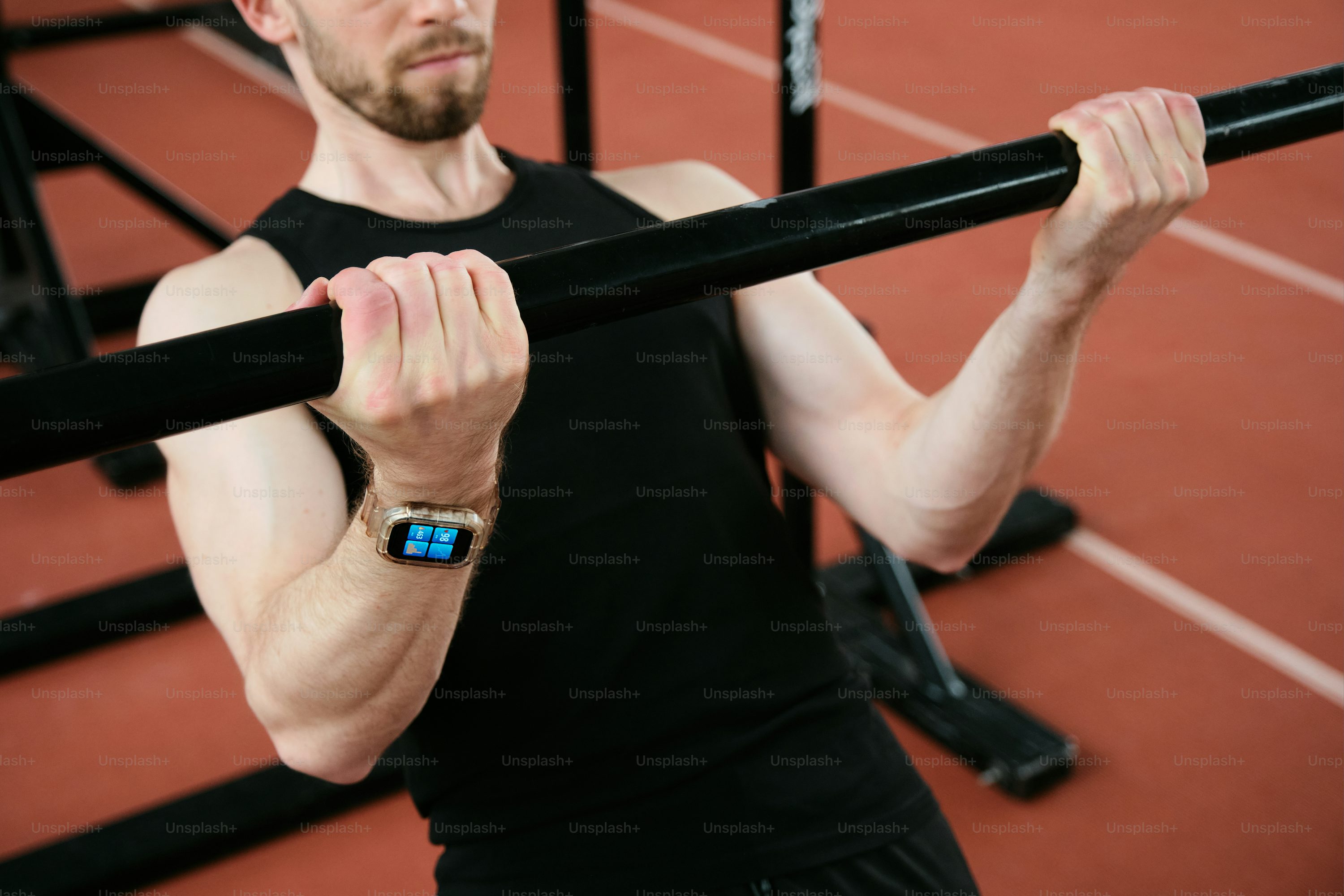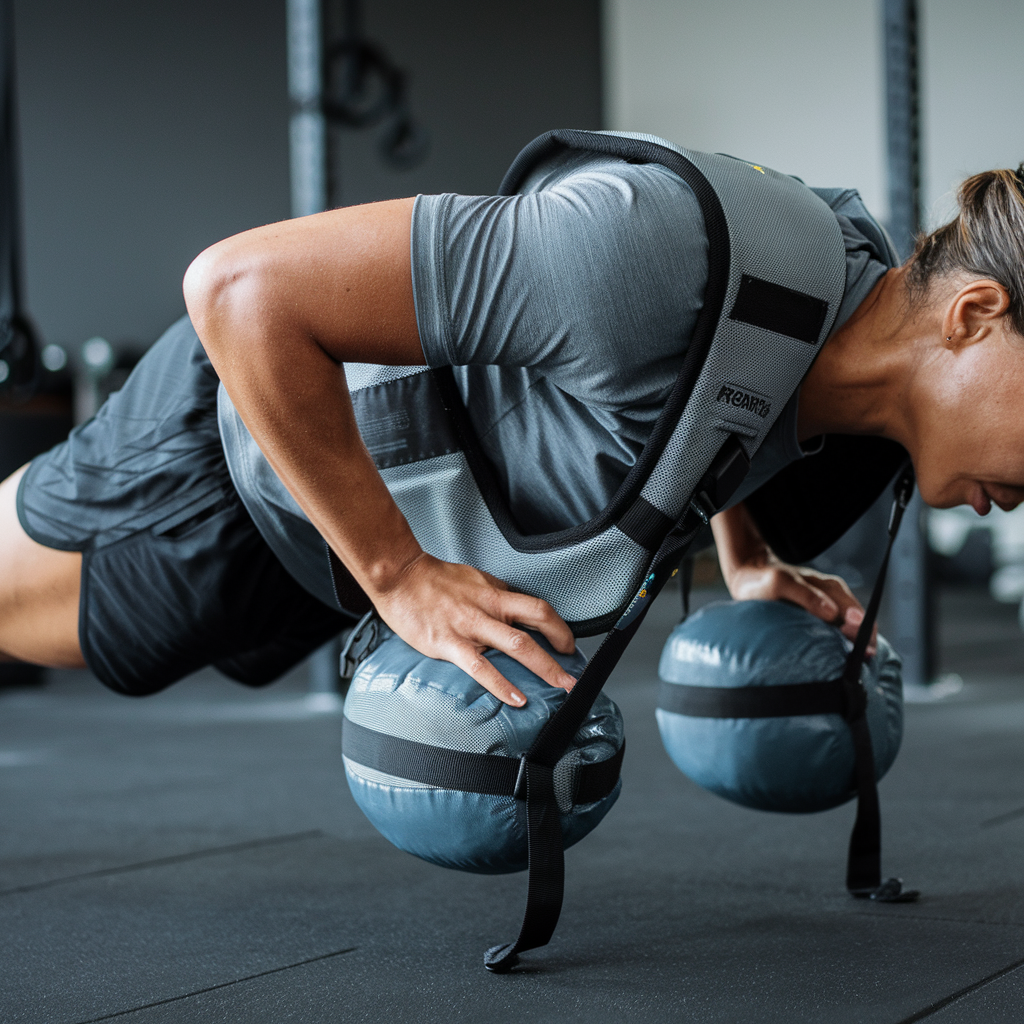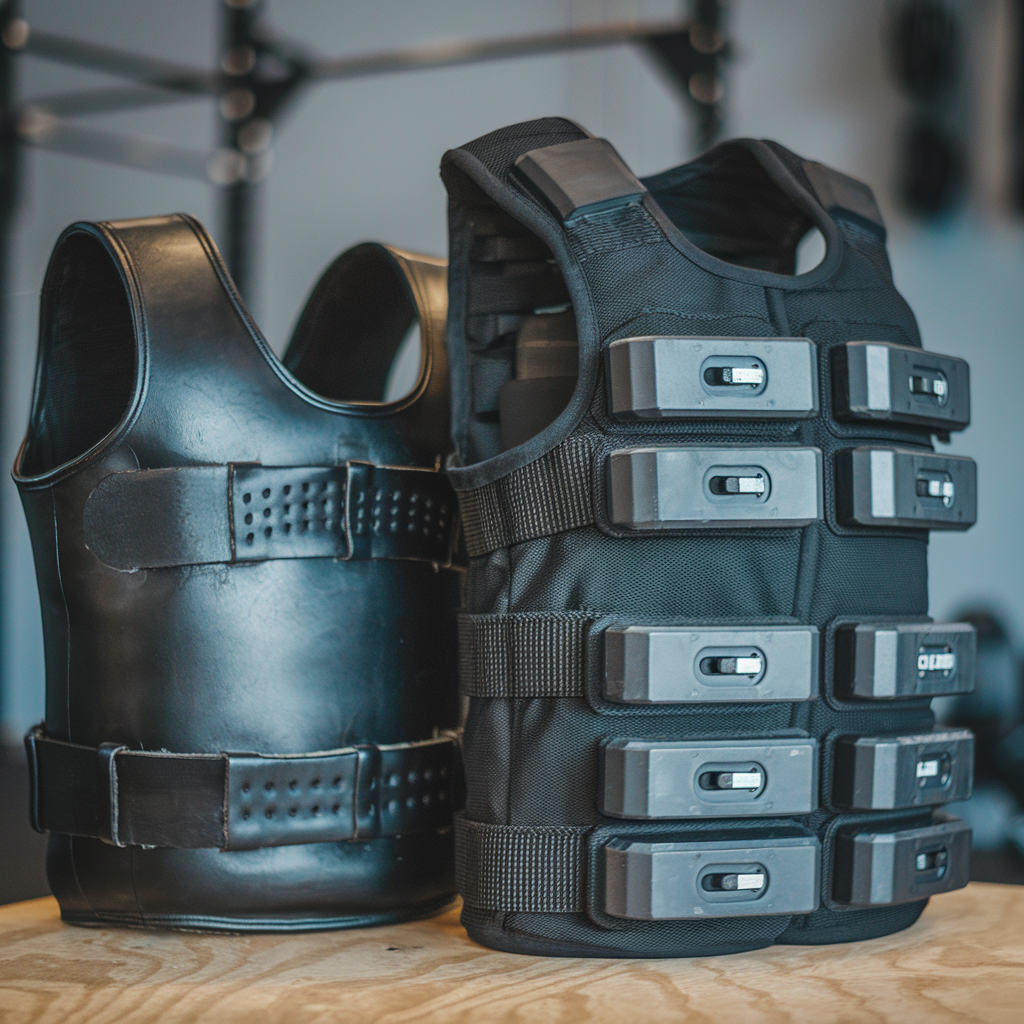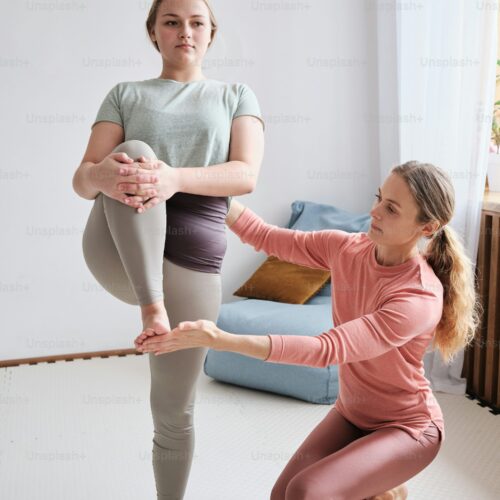
Key Takeaways.
- Core stability supports your spine, relieves back pain, and boosts posture, balance, and performance.
- Weighted vests provide resistance that can enhance strength, muscle activation, and balance.
- The top exercises for the core include planks, side planks, glute bridges, dead bugs, bird dogs, Russian twists, and hollow body holds.
- Proper form is important; engage your core, maintain a neutral spine, and move with control to increase core strength.
- Progress gradually by starting with lighter weights and increasing resistance over time.
- Core strength benefits daily life, improving coordination and reducing back problems.
- Weekly workout plans should include a mix of exercises for a balanced routine.
- Professional guidance can help if you have chronic back pain or need exercise modifications.
- Core stability enhances one’s general fitness by promoting better posture and functional strength.
- Exercises are for all levels, from beginners to advanced fitness enthusiasts.
Introduction.
Building a solid core is the foundation of total fitness and balance. These are your core muscles that, including the rectus abdominis, transverse abdominis, obliques, and back muscles, have important work in stabilizing the spine, improving posture, and preventing injuries like low back pain. By incorporating the weighted vest into the exercises that work your core stability, you raise the ante on your workout, making the work of building strength and stability more effective.
This article will educate you on some effective core exercises targeting the abdominal and back muscles with the integration of deep stabilizers of the trunk, which are important in strength training. Whether you’re a regular exerciser, or personal trainer, or suffer from chronic low back pain, take a look at these exercises for strengthening your core and enhancing your overall stability.
Why Core Stability Matters
Core stability isn’t just about having six-pack abs. A stable core is vital for the muscles of the core and overall physical therapy.
- Supports your lumbar spine during movement.
- This reduces the risk of chronic low back pain and makes physical therapy an effective option for affected individuals.
- Improves balance and coordination.
- Improves performance of exercises such as running, lifting, and other related sports.
- Assists in daily movements such as bending, twisting, and reaching.
By training your core, you target deep core muscles that often go neglected in general exercises. Weighted vests further enhance these exercises by increasing resistance, forcing your core to engage more actively.
How Weighted Vests Boost Core Training
Weighted vests add external resistance to your body during exercises. This resistance:
- Increasing muscle activation: Your core muscles work harder to stabilize the body.
- Challenges balance: Weighted vests shift the center of gravity, which improves trunk stability.
- Enhances strength: The additional load builds core musculature over time.
- Improves posture: Strengthening the core muscles helps maintain a neutral spine.
- Enhances Endurance: With added weight, your body adapts to increased demands thus improving the overall endurance levels during workouts.
- Promotes Functional Fitness: By mimicking real-life challenges, weighted vests can effectively prepare your body for everyday activities that require you to lift, carry, and move under load.
- Variety in Workouts: Weighted vests easily allow variety in training modalities-from bodyweight exercises like push-ups and squats to cardio activities like running or hiking-and keep workouts fresh and engaging.
- Progressive Resistance: Perhaps one of the most significant weighted vest advantages is the scalability of the load to an individual’s fitness level; you can start light and progress resistance upwards by increasing the weight as you feel yourself getting stronger and able to handle more.
- Utilizing a weighted vest to complement fitness has a lot of effects from strength and endurance right down to the overall functional fitness and strength that happens cognitively. Keep the cardinal rule in mind by moving at a pace acceptable and safe for your person by listening to your body’s needs.
Weighted Vest Core Stability Exercises

The following are 7 exercises to build core strength and stability
Weighted Vest Plank
The plank is the mother of core strength training. Adding a weighted vest increases the resistance therefore activating your abdominal and back muscles.
How to Perform:
- Lying flat on the floor face down, with the weighted vest secured, amplifies core exercises to build strength.
- Position your arms parallel to the floor. Your elbows should be directly below your shoulders.
- Lift your hips off the ground, creating a straight line going from your head to your heels.
- Maintaining a flat back, compress your core and hold it for 30–60 seconds.
Tips:
- Avoid arching your lower back.
- Squeeze your glutes to maintain a stable core.
Side Plank with Weighted Vest
This exercise targets the obliques and improves lateral stability.
How to Perform:
- Strap your weighted vest to your upper torso. Lie on your left side with your legs put together
- Place your left forearm on the floor and, your elbow under your shoulder.
- Press up off the floor to maintain a straight-line posture to your heels.
- Hold for 20–40 seconds before switching to the right side.
Tips:
- Keep your hips level and avoid letting them sag.
- For an advanced version, raise your left leg.
Weighted Vest Glute Bridge
Glute Bridge strengthens the backside of the pelvis and lower back, all deep core muscles, including engaging the glutes themselves.
How to Perform:
- Put on the weighted vest tightly over your torso.
- Lie on your back keeping your knees bent and feet flat.
- Raise your hips off the ground while squeezing the core. the posture created should be straight from your shoulders to your knees.
- Stop, then lower back down to the starting position.
Tips:
- Squeeze your glutes at the top for maximum activation.
- Avoid arching your lower back.
Weighted Dead Bug
The dead bug exercise is great for activating your core without compromising your spine. How to Perform:
- Snag on to your weighted vest.
- Lying on your back with your knees bent 90 degrees, extend your arms toward the ceiling.
- Holding tiny dumbbells, simultaneously lower your right arm and left leg till they are parallel to the floor.
- Repeat with the left arm and right leg, then return to the beginning position.
Tips:
- Keep your lower back flat-straight against the floor.
- Move slowly to challenge your stabilization muscles.
Weighted Bird Dog
The bird dog challenges balance and strengthens the back and abdominal muscles. How to Perform:
- Begin on all fours, with the weighted vest secure.
- Extend your right arm and left leg, in one line from hand to toes.
- Hold the posture for 15-30 seconds, then return to the beginning position.
- Repeat with the left arm and right leg.
Tips:
- Avoid tilting your pelvis.
- Keep your core engaged throughout the movement.
Weighted Vest Russian Twist
This rotational exercise targets the obliques and strengthens the core.
How to Perform:
- Fasten your weighted vest.
- Sit on the floor bending your knees and keeping your feet flat.
- Fasten the weighted vest on, then lean back slightly to engage your core.
- Rotate your torso to the right, bringing your hands (or weight if added) toward the floor.
- Return to the center and twist to the left.
Tips:
- Move slowly and deliberately to avoid straining your lower back.
- Keep your spine neutral throughout the exercise.
Weighted Vest Hollow Body Hold
This stabilization exercise strengthens the entire core, including the deep transverse abdominis, essential for effective strength training. How to Perform:
- Secure your weighted vest to the upper body.
- Lie on your back with your arms stretched overhead and legs straight.
- Create a c-shape by lifting your arms and legs off the floor.
- Hold the position for 20–30 seconds, rest then repeat.
Tips:
- Keep your back flat against the floor.
- Focus on controlled breathing to maintain tension.
Types of Weighted Vests to Improve Core Strength.

Weighted vests come in two variations. These are: Fixed and adjustable.
Fixed Weighted vests.
Fixed-weighted vests come with permanently pre-installed weights. They are perfect for people who have attained a desirable fitness level and wish to maintain a constant training routine.
Adjustable Weighted Vests.
As the name suggests, an adjustable weighted vest has removable weight packets, which can be adjusted according to your resistance training program. You can add resistance as you develop your core muscles or reduce the resistance according to your fitness level.
Tips for Safe and Effective Core Training
- Squeeze your abdominal muscles during exercises to protect your core your spine and reap optimal results.
- Neutral spine: Avoid arching or rounding of the back.
- Progress Gradually: Begin with a lightweight vest and add more load as your core gets stronger.
- Focus on form: The key to performing all workouts injury-free while reaping maximum benefits is incorporating the correct technique.
- Rest: Allow 48–72 hours between intense core workouts to prevent overtraining and muscle fatigue.
Creating Best Core Workout Routine.
A well-structured routine helps you strengthen your core systematically. Here’s a sample weekly plan:
- Monday: Plank, Side Plank, Dead Bug
- Wednesday: Glute Bridge, Bird Dog, Hollow Body Hold
- Friday: Russian Twist, Side Plank, Weighted Vest Plank.
Adjust the intensity and number of repetitions according to your fitness level and goals. Do 2–3 sets of each exercise, holding or performing 10–15 repetitions per set.
Benefits of Core Stability Workouts
Core stability workouts with weighted vests offer a wide array of benefits:
- Strengthened Core Muscles: Contrasts resilience in the rectus abdominis, obliques, and transverse abdominis.
- Reduced Low Back Pain: Enhances the lumbar spine support and reduces strain on the spine.
- Improved Balance: A stable pelvis and spine enhances body balance hence improved coordination.
- Enhanced Posture: Helps maintain a straight line when performing activities, preventing problems with the back.
- Better Performance: A strong core supports efficient movement in both sports and daily life.
When to see a Physical Therapist or Personal Trainer.
If you have persistent lower back pain or are having difficulty with core exercises, see a physical therapist or personal fitness trainer to learn modified exercises that may help improve your condition. They can also design a program of exercises to enhance your core strength as well as to help with any issues of hip and knee stability.
- Check your core strength and stability.
- Modify or suggest alternative exercises.
- Ensure your technique is safe and effective.
Conclusion
Adding a weighted vest to core stability workouts offers a great way to increase your strength, improve your posture, and prevent injury. Mastering these moves will fire up your core muscles, safeguard your spine, and boost your overall fitness.
Do these exercises in a slow and controlled manner, focusing on form, and gradually increase the difficulty of challenging your core for better overall stability. A strong, stable core is the foundation of a healthier and more balanced body.
Frequently Asked Questions.
What are core stability workouts?
Core stability workouts target those muscles responsible for stabilizing your spine, and improving posture, and balance. They help prevent back pain and improve general strength and functionality.
How does adding a weighted vest engage your core?
A weighted vest adds resistance, increasing muscle activation and challenging your balance during strength training. Resistance intensifies core engagement, leading to greater strength and stability, which can help reduce back pain.
Which muscles are activated during core exercise training?
The rectus abdominis, transverse abdominis, obliques, erector spinae, latissimus dorsi, rhomboids, trapezius, and deep stabilizers support the lumbar spine.
What are the best weighted vest core exercises?
You can do effective exercises like planks, side planks, glute bridges, bird dogs, dead bugs, Russian twists, and hollow body holds.
Is it safe for me to use a weighted vest with low back pain?
Weighted vest exercises can be safe if performed appropriately. Start with lighter resistive levels and focus on maintaining proper form. Consult with a physical therapist for specific recommendations that may benefit you.
What is the recommended weight for beginners using a weighted vest?
Begin with a weighted vest weighting 5–10% of your body weight. Once you build strength in the core, progressively increase the weights but do not exceed 20%.
Can weighted vest core exercises help reduce chronic low back pain?
Yes, these exercises strengthen deep core muscles that stabilize the lumbar spine and reduce the incidence of chronic lower back pain.
How often should I perform weighted vest core exercises?
Perform weighted vest core exercises 2 to 3 times per week. Allow 48-72 hours between intense workouts to recover.
What safety measures can I take while using a weighted vest?
Ensure the vest is of the correct size so that it fits snugly. Begin with small weights, and focus on form. Avoid overtraining to prevent injuries.
Are weighted vest core exercises suitable for all fitness levels?
Yes, they can be adapted to any fitness level. For beginners, it’s easy to start with basic movements and lighter weights, while advanced users can incorporate more challenging variations and heavier resistance.
References
- Ezequiel Ray, Alexis Padron Cabo, Diego Fernandez Diego: Effects of Sprint Training With and Without Weighted Vest on Speed and Repeated Sprint Ability in Male Soccer Players; November 2016 The Journal of Strength and Conditioning Research 31(10):1DOI:10.1519/JSC.0000000000001726. https://www.researchgate.net/publication/310814497_Effects_of_Sprint_Training_With_and_Without_Weighted_Vest_on_Speed_and_Repeated_Sprint_Ability_in_Male_Soccer_Players
- Travis Edwards: Your Guide to Exercising with Weighted Vests; PT, MPT on June 30, 2021. https://www.healthline.com/health/fitness/weighted-vest-benefits.





